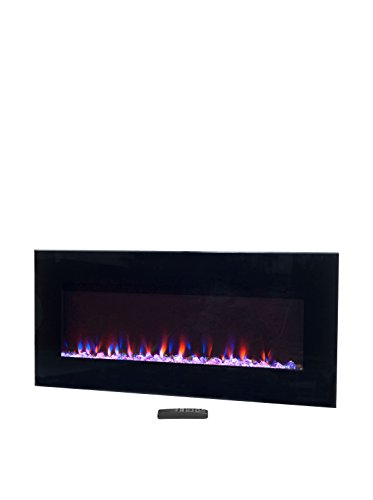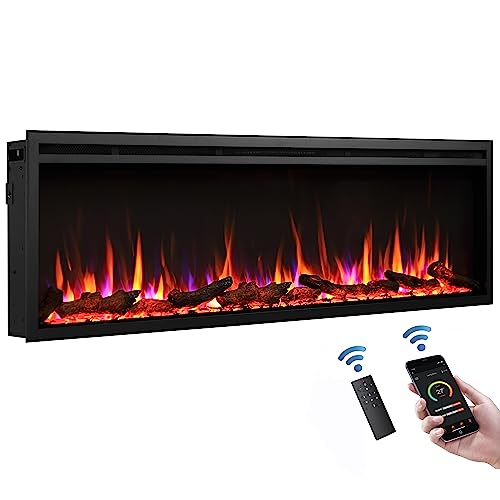Wood stoves, unlike traditional open fireplaces, are designed to use wood for combustion. This allows them to comply with stricter emission regulations.
 Wood burning stoves provide dancing yellow flames, cosy crackling sounds, and that primordial sensation of warmth. The smoke that is generated contains toxic air pollutants like benzene, formaldehyde, and polycyclic aromatic hydrocarbons.
Wood burning stoves provide dancing yellow flames, cosy crackling sounds, and that primordial sensation of warmth. The smoke that is generated contains toxic air pollutants like benzene, formaldehyde, and polycyclic aromatic hydrocarbons.Efficient
Fireplaces and stoves that burn wood provide beautiful and natural heat to your home, but they are also incredibly efficient. A good quality wood burner can be able to achieve an Ecodesign rating as high as 77 percent. It is vital to get the most benefit of your log stove particularly with the increasing energy costs. The good news is that it's now easier than ever before to do!
A key factor in the efficiency of the wood-burning stove is is the water content of the wood. This is why we suggest only using seasoned wood, which has been dried for a minimum of one year, and more often two years. The more dry the wood, the more efficiently it burns which results in less smoke and harmful emissions.
Another great benefit of a wood-burning stove is that it's an eco-friendly source of fuel, which is fantastic for the environment. Furthermore, by buying locally-sourced firewood, you are helping to support the active management of forests which is a good option for wildlife.
As far as maintenance is concerned, the only requirement of a wood burner is to frequently scoop up and dispose of the ash. It's a bit of a hassle however it is worth it to get the best heat from each log. If you wait for the ashes to completely cool, they can also be utilized as a non-toxic and environmentally friendly melt of ice. They can also be used to polish jewellery and remove smells.
A wood burner fireplace is a truly timeless classic. While they may be less popular than gas fires but there's no denying the beauty and enthralling sound of a warm log fire. They are ideal to cuddle up with on cold nights, and they make a warm and inviting space in your home. Make sure you invest in a high-quality wood burner and you'll be benefiting for many years to come! Our chimney sweeps are available to help you get the most value from your stove - give us a call today to learn more.
Low Carbon
Burners that burn clean and efficiently are among the most efficient ways to save money on logs and keep your home warm. They also aid local woodland management. This is a great option to help wildlife in your area.
Wood-burning Fireplaces And Stove and stoves create minimal pollution when they are properly maintained and are used with dry, seasoned and dry firewood. If they aren't maintained properly or use wood that is of poor quality the smoke produced contains fine particles, commonly referred to as particulate pollution that can cause irritation to the lungs and other body organs. It also contains carbon monoxide as well as toxic air pollutants such as benzene, formaldehyde and polycyclic aromatic hydrocarbons. Inhaling air pollution can cause irritation of the lung and lead to asthma attacks wheezing, coughing, and irritation of the lungs. It could also cause cancer, heart disease or premature death.
Some people worry that using a wood-burning stove can cause climate change however this isn't necessarily the case. Burning wood is a carbon neutral energy source. The tree absorbs carbon dioxide over its life. When burned the carbon dioxide is released into the air.
Since the wood is sourced locally, it reduces the amount of pollutants released in the process of transportation. It is also essential to select top quality well-seasoned hardwoods, as they will provide an extended and more consistent burning time than softwoods.
Modern, EPA certified wood stoves and heaters (such as those manufactured by Charlton & Jenrick) have significantly lower emissions than older stoves. They have been certified to meet 2020 EPA standards, which are considerably stricter than earlier emission limits.
All wood burning stoves must be fully vented to the outside of your home to ensure that they don't create a haze of exhaust inside your home. All of our DEFRA-exempt and clean burn stoves can produce extremely clear exhaust by keeping the flames at a distance from the logs of wood and using dry, seasoned firewood.
 A wood-burning stove with a catalytic converter can provide the ultimate low carbon solution for heating. These units re-ignite gases and particles from the initial burning in a subsequent phase by mixing them superheated air. The remaining gasses and particulates are transferred to a catalytic unit to create a final and third combustion. This further reduces emissions to levels well below the standards set by the government.
A wood-burning stove with a catalytic converter can provide the ultimate low carbon solution for heating. These units re-ignite gases and particles from the initial burning in a subsequent phase by mixing them superheated air. The remaining gasses and particulates are transferred to a catalytic unit to create a final and third combustion. This further reduces emissions to levels well below the standards set by the government.Clean Burn
Cleanburn wood stoves burn fuel at the highest efficiency possible. This results in the emission of a small amount of particles into the air when burning wood. The stove's air management system controls the intake and venting of gases, making sure that the combustion process takes place in a controlled, sealed environment. It also regulates flame height to maximize heat output and minimize emissions.
This means that your chimney and the surrounding area will be much cleaner than older stoves. Particulate matter (also known as particle pollution) from wood that is not fully combusted causes respiratory problems such as coughing and wheezing in people and can contribute to the development of heart diseases as well as stroke, diabetes, and other serious health conditions. Wood burning is also a contributor to poor air quality in cities.
Smoke from poorly combusted wood contains fine particulate pollutants and dangerous air pollutants like carbon monoxide and other hazardous air pollutants like nitrogen oxides, volatile organic compounds (VOCs), benzene and formaldehyde. These particles can be absorbed into the lungs, and other organs causing discomfort, injury, and even death. Airborne dust can also harm the surfaces in your home and give the impression of a rough surface to rooms.
When using your wood-burning fireplace, it's important to only use high-quality firewood that has been dried and seasoned. dried. Hardwoods like oak beech, ash, and ash are the best choice for heating. Hardwoods are extremely dense and have more BTU than softwoods. They also provide more heat.
You should also determine if your local authority has rules regarding wood burning. These may include rules on odors and nuisances, as well as visible emissions or smoke opacity limits.
If you have a wood burner with a glass door it is essential to keep the glass free of grime and deposits. This can be done using dry cloths or oven cleaner spray. Alternatively, you can add bicarbonate of soda mixed with a bit of water to the glass.
Regular maintenance of your chimney and stove is also vital. Regular chimney cleanings are required to eliminate creosote, and also to ensure that the flue works properly. It is also important to mark the dates of your periodic inspections on your calendar. This will help you to avoid costly repairs and prolong the life of your wood burner.
Low Maintenance
Many people prefer installing wood-burning fireplaces due to the natural warmth they generate. However, this kind of fire requires some care and maintenance. The chimney, flue, and stove are all possible sources of house fires if not cleaned and maintained regularly. Fireplaces are also an excellent source of warmth when power is out, especially in winter, when snow storms could cause branches to fall from trees and rip up power lines.
If you use a wood stove to heat your home, you will reduce your carbon footprint when compared to other fossil sources of fuel like gas. Modern wood stoves and inserts are designed to comply with EPA (Environmental Protection Agency) standards, which means that they produce very low emissions. The more seasoned wood you use the more efficient your stove will be. You'll need less wood to get the same amount of heat.
These fireplaces require some maintenance and care, including ensuring they are positioned away from the ignition source and that a screen is installed. The air flow can be improved by keeping the grate clear of ash and other debris. This will help keep the fire burning longer and your home tidy. It is recommended that your chimney and stove cleaned at least two times per year to prevent the accumulation of creosote, which can cause a fire hazard or clog and restrict ventilation.
It could take a while for homeowners who are new to the area to learn how to light, ignite and maintain a steady fire in the fireplace. However, once you have mastered the art of building and maintaining an open flame in your wood stove, it can be a source of lasting pleasure that will provide warmth and warmth to your home all year long.
Wood burning fireplaces have been around in one form or another for more than 500 years. They've gained a lot of attention because of their effectiveness, sustainability, and the natural warmth that comes from wood. If you're thinking of buying installing a new heater, speak with your local Regency certified dealer to learn more about the advantages of an insert or stove made of wood for your home.



